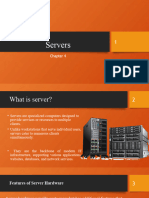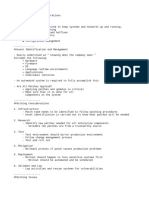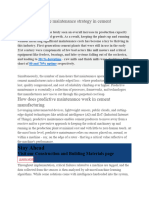0% found this document useful (0 votes)
14 views5 pagesServer Availability Performance Security
This document discusses the importance of server availability, performance, and security in IT infrastructure. It outlines key techniques for improving each aspect, such as redundancy and load balancing for availability, hardware optimization and caching for performance, and firewall protection and encryption for security. By focusing on these areas, organizations can ensure reliable and efficient server environments that support business operations.
Uploaded by
munazza953Copyright
© © All Rights Reserved
We take content rights seriously. If you suspect this is your content, claim it here.
Available Formats
Download as PDF, TXT or read online on Scribd
0% found this document useful (0 votes)
14 views5 pagesServer Availability Performance Security
This document discusses the importance of server availability, performance, and security in IT infrastructure. It outlines key techniques for improving each aspect, such as redundancy and load balancing for availability, hardware optimization and caching for performance, and firewall protection and encryption for security. By focusing on these areas, organizations can ensure reliable and efficient server environments that support business operations.
Uploaded by
munazza953Copyright
© © All Rights Reserved
We take content rights seriously. If you suspect this is your content, claim it here.
Available Formats
Download as PDF, TXT or read online on Scribd
/ 5




















































































